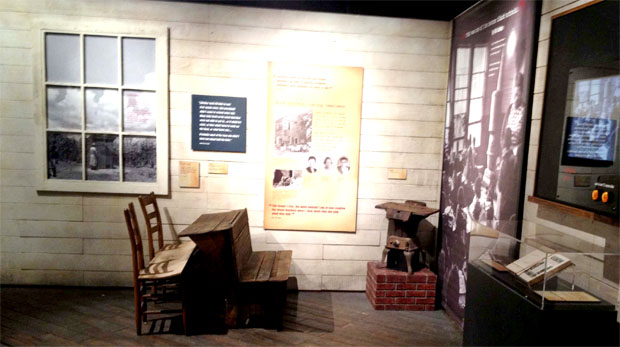Holocaust Museum exhibit depicts life before racial integration
By Richard Steele

Holocaust Museum exhibit depicts life before racial integration
By Richard Steele
As an African-American born during World War II, when the subject is race, I’m always interested in the many stories that have not been told.
I recently covered a new exhibit at the Illinois Holocaust Museum and Education Center in Skokie. It’s called “Courage: The Vision to End Segregation, The Guts to Fight for It.”
Essentially, it’s the story of the Rev. J.A. De Laine and his family, along with some brave black citizens of Clarendon County, S.C., and how they fought to end “separate but equal” schools that were anything but equal.
Much of the story is about the Briggs v. Elliot lawsuit filed in 1951. It was one of five lawsuits that were rolled into Brown v. Board of Education, which overturned segregated schools in 1954.
This expansive museum exhibit provides an extraordinary amount of context and will help visitors to fully understand why this court case that changed a nation is actually a grassroots people story, too.
I had the privilege of meeting with Joe A. De Laine and Ophelia De Laine Gona. They are the surviving son and daughter of Rev. De Laine. They shared vivid recollections of some of the awful things that happened to people who signed on to the Briggs lawsuit.
Ophelia told me about a sharecropper who was an illiterate mother of three, whose husband had abandoned the family years earlier. She was brave enough to sign onto the Briggs lawsuit. In response, she was thrown off the land and had no place to go. Others lost their jobs and were blacklisted.
Their father, Rev. De Laine, got shot at and was in danger of losing his life. The family fled, and their house was burned down in retaliation. Ophelia says they lost everything in the fire.

That tradition of getting a good education was part of Rev. J.A. De Laine’s legacy. His father came from a family that made education their highest priority. He especially emphasized the importance of education for girls: He felt his sons – including Rev. De Laine — could find a way to make it, but he didn’t want the girls to end up working as maids
Rev. De Laine followed his father’s example, both as an educator and as a father: All three of his children earned college degrees.
Ophelia De Laine Gona went on to earn a doctorate.
Her grandfather would be especially proud.
NOTE: To hear about Rev. De Laine’s fight, how he and his family protected themselves with guns over every door, and the day he had to flee for his life, listen to the audio above.
WBEZ’s Greta Johnsen produced this report. Audio excerpts from the exhibit are courtesy of the Levine Museum of the South and Wonderworld Film.
